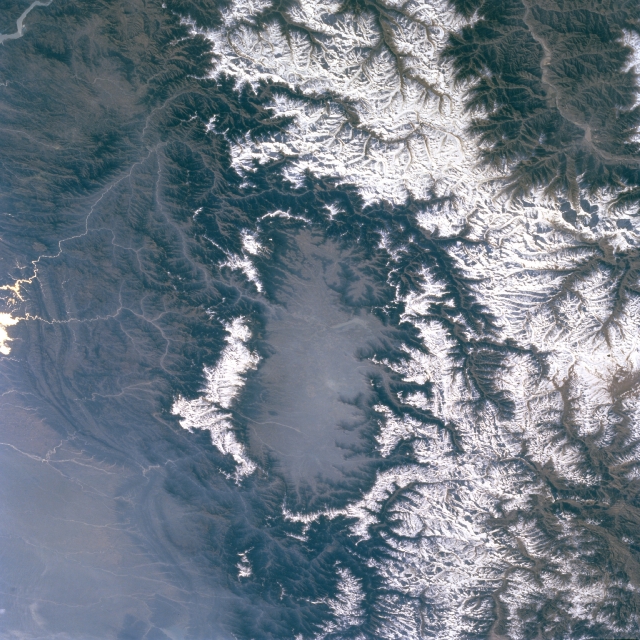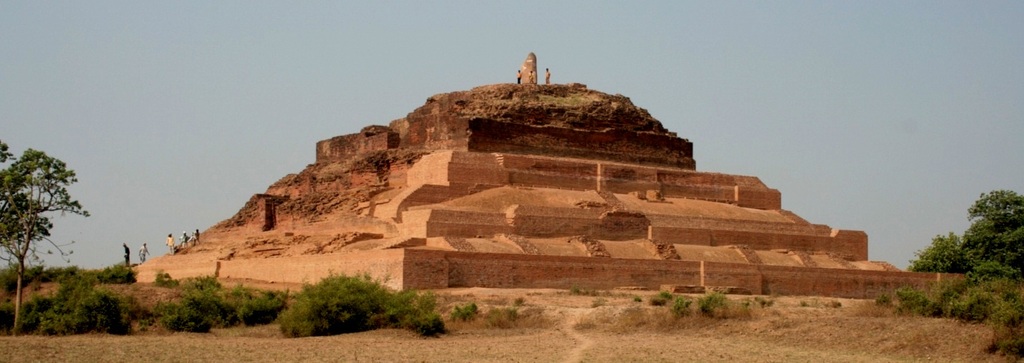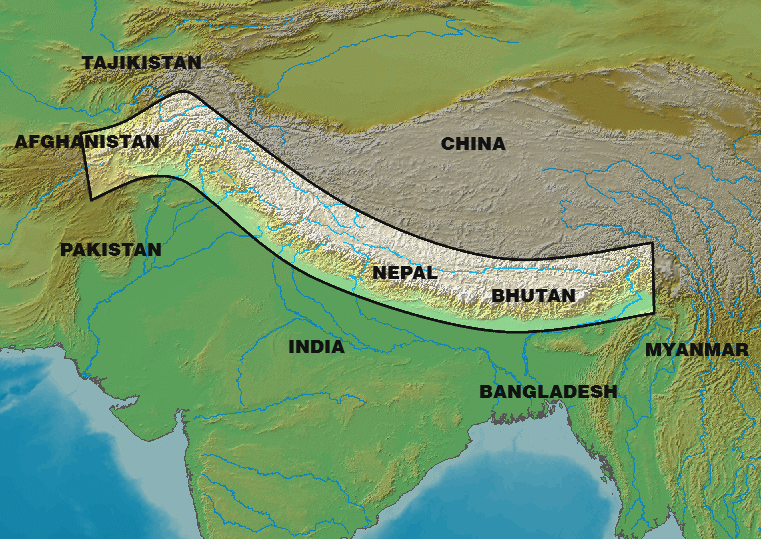|
Khasas
Khasas (Devanāgarī: खश; ') were an ancient Indo-Aryan tribe and a late Janapada kingdom from Himalayan regions of northern Indian subcontinent mentioned in the various historical Indian inscriptions and ancient Indian Hindu and Tibetan literatures. European sources described the Khasa tribe living in the Northwest Himalayas and the Roman geographer Pliny The Elder specifically described them as "Indian people". They were reported to have lived around Gandhara, Trigarta and Madra Kingdom as per the Mahabharata. People of this tribe includes Khas people of medieval Western Nepal, medieval Indian regions of Garhwal and Kumaon, the Kanets of Kangra, Himachal and Garhwal, the Khasa of Jaunsar-Bawar as well as Khakha Rajputs and Bomba clans of Kashmir and different part of northern Pakistan. Names and variants The original spelling for the name in Sanskrit literature is Khaśa (Sanskrit: खश) while variants of name also used are Khasa (खस), Khaṣa (खष) ... [...More Info...] [...Related Items...] OR: [Wikipedia] [Google] [Baidu] |
Khas People
Khas people (; ne, खस) popularly known as Khas Arya are an Indo-Aryan ethno-linguistic group native to the Himalayan region of South Asia, what is now present-day Nepal, Indian states of Uttarakhand, West Bengal and Sikkim. Historically, Khas were the speakers of an ancient ''Khas language'' from the Indo-Aryan language family and the earliest recorded speakers of the Western Pahari languages. The large portion of the Indo-Aryan speakers throughout lower Himalayas were the Khas people. An intrusion of this tribe from the Western and Northwestern Himalayas into Central Himalayas is substantiated by the early linguistic evidences related to the Nepali language. They were also known as Parbatiyas/Parbates and are currently known as Paharis/Pahadis. They were also referred to as Yartse in Tibet and are also known as Khasan by Bhotia people. The term ''Khas'' has now become obsolete, as the Khas people have adopted communal identities because of the negative stereotypes as ... [...More Info...] [...Related Items...] OR: [Wikipedia] [Google] [Baidu] |
Gandhara Kingdom
Gandhāra ( sa, गन्धार) was an Ancient Indian kingdom mentioned in the Indian epics Mahabharata and Ramayana. Gandhara prince Shakuni was the root of all the conspiracies of Duryodhana against the Pandavas, which finally resulted in the Kurukshetra War. Shakuni's sister was the wife of the Kuru king Dhritarashtra and was known as Gandhari after the area of Gandhāra (which is in modern Afghanistan and Pakistan). Puskalavati, ''Takshasila'' (Taxila) and ''Purushapura'' (Peshawar) were cities in this Gandhara kingdom. Takshasila was founded by Raghava Rama's brother Bharata. Bharata's descendants ruled this kingdom afterwards. During the epic's period, the kingdom was ruled by Shakuni's father ''Suvala'', Shakuni and Shakuni's son. Arjuna defeated Shakuni's son during his post-war military campaign for Yudhishthira's Aswamedha Yagna. Janamejaya, a Kuru king in Arjuna's line, conquered Takshasila, probably then ruled by the Naga Takshaka. He conducted a massacre c ... [...More Info...] [...Related Items...] OR: [Wikipedia] [Google] [Baidu] |
Bomba (tribe)
The Bomba, also spelled as Bambas, are a tribe found in Azad Kashmir. They are primarily found in Muzaffarabad and Neelum districts, with a large number concentrated in and around the town of Ghori. Outside of Azad Kashmir, they are also found in the Boi and Kaghan valleys of Mansehra District, and the city of Abbottabad—all located in Khyber Pakhtunkhwa. History and origin The Bomba clan represented the Khasa tribe that inhabited the tracts of Karnah/Karnav region. The Rajas of the Bomba clan independently ruled the Karnah region till the Sikh conquest of Kashmir. The Karnav Bombas together with their supporters, Khakha chiefs of Vitasta valley, were invaded in 1846. The Bombas/Bambas style themselves as 'Sultans', and some claim origins from the Quraysh. Others state that they are of indigenous hill Rajput origins. In the past Bombas ruled the Jhelum valley and had a close alliance and kinship with the Khakha Rajput tribe who also inhabited the same area. The success ... [...More Info...] [...Related Items...] OR: [Wikipedia] [Google] [Baidu] |
Indo-Aryan Tribe
Indo-Aryan peoples are a diverse collection of Indo-European peoples speaking Indo-Aryan languages in the Indian subcontinent. Historically, Aryan were the Indo-European pastoralists who migrated from Central Asia into South Asia and introduced Proto-Indo-Aryan language. The Indo-Aryan language speakers are found across South Asia. History Proto-Indo-Iranians The introduction of the Indo-Aryan languages in the Indian subcontinent was the result of a migration of Indo-Aryan people from Central Asia into the northern Indian subcontinent (modern-day Bangladesh, Bhutan, India, Nepal, Pakistan, and Sri Lanka). These migrations started approximately 1,800 BCE, after the invention of the war chariot, and also brought Indo-Aryan languages into the Levant and possibly Inner Asia. Another group of the Indo-Aryans migrated further westward and founded the Mitanni kingdom in northern Syria; (c. 1500–1300 BC) the other group were the Vedic people. Christopher I. Beckwith su ... [...More Info...] [...Related Items...] OR: [Wikipedia] [Google] [Baidu] |
Kumaon Kingdom
Kumaon Kingdom was an independent Himalayan kingdom in the eastern region of present-day Uttarakhand state of India. It was established around 7th century and remained an independent and sovereign kingdom until 1791. Etymology Kumaon is believed to have been derived from ''Kurmanchal'', meaning land of the Kurma Avatar (the tortoise incarnation of Lord Vishnu, the preserver according to Hinduism). The region of Kumaon is named after as such. During the time of the British control of the region, between 1815 and 1857 it was also known as ''Kemaon''. History Ancient Kumaon finds mention in the early Hindu scriptures as ''Manaskhand, according to'' Skanda Purana ''the region'' is believed to be the Birth place of Kurmavtar of Hindu god Vishnu. Prehistoric dwellings and Stone Age implements have been discovered in Almora and Nainital districts. Initially settled by Kol tribals, the region witnessed successive waves of Kiratas, Khasas and Indo-Scythians(sakas). Kunindas ... [...More Info...] [...Related Items...] OR: [Wikipedia] [Google] [Baidu] |
Garhwal Kingdom
Garhwal Kingdom was an independent Himalayan kingdom in the current north-western Himalayan state of Uttarakhand, India, founded in 688 CE by Kanak Pal, the progenitor of the Panwar dynasty that ruled over the kingdom uninterrupted until 1803 CE. The kingdom was divided into two parts during the British Raj, namely: the princely state ''of Garhwal and'' the ''Garhwal District'' of British India. During this period, the princely state of Garhwal was one of the States of the Punjab Hills which became part of the Punjab Hill States Agency although it was not under the Punjab Province administration. The princely state of Garhwal or Independent Garhwal consisted of the present day Tehri Garhwal district and most of the Uttarkashi district. This former state acceded to the Union of India in August 1949 CE. Etymology The exact origin of the word 'Garhwal' is unknown, though it is believed to be derived from the title ‘''Garh-wala''’ (Owner of Forts) given to the rul ... [...More Info...] [...Related Items...] OR: [Wikipedia] [Google] [Baidu] |
Madra Kingdom
Madra Kingdom (; ) was a kingdom grouped among the western kingdoms in the epic Mahabharata. Its capital was Sagala in Madra region, modern Sialkot in the Punjab province of Pakistan. The Kuru king Pandu's (''Pāṇḍu'') second wife was from Madra kingdom and was called Madri (; ; IPA/Sanskrit: ). The Pandava twins, Nakula and Sahadeva, were her sons. Madri's brother Shalya was the king of Madra. Though affectionate to the Pandavas, he was tricked to give support to Duryodhana and fought against the Pandavas during the Kurukshetra War. He was killed by Yudhishthira, the eldest Pandava. Other than the Madra kingdom (Eastern Madra or Purva Madra) with Sagala as its capital, it is believed that there was a Western Madra (Apara Madra) and a Northern Madra (Uttara Madra). Origin According to the Vayu Purana, the Madra Kingdom was founded by King Ushinara Shibi of the Anu race. Anu was the son of Yayati. According to Bhagavata Purana, The kingdom of Madra was founded by Madr ... [...More Info...] [...Related Items...] OR: [Wikipedia] [Google] [Baidu] |
Janapada
The Janapadas () (c. 1500–600 BCE) were the realms, republics (ganapada) and monarchy, kingdoms (saamarajya) of the Vedic period on the Indian subcontinent. The Vedic period reaches from the late Bronze Age India, Bronze Age into the Iron Age India, Iron Age: from about 1500 BCE to the 6th century BCE. With the rise of sixteen ''Mahajanapadas'' ("great janapadas"), most of the states were Annexation, annexed by more powerful neighbours, although some remained independent. Etymology The Sanskrit term ''janapada'' is a tatpurusha compound term, composed of two words: ''janas'' and ''pada''. ''Jana'' means "people" or "subject" (cf. Latin cognate ''genus'', English language, English cognate ''kin''). The word ''pada'' means "foot" (cf. Latin cognate ''pedis''); from its earliest attestation, the word has had a double meaning of "realm, territory" and "subject population" (cf. Hittite ''pedan'', "place"). Linguist George Dunkel compares the Greek language, Greek ''andrapodon'' ... [...More Info...] [...Related Items...] OR: [Wikipedia] [Google] [Baidu] |
Medhātithi
Medhātithi is one of the oldest and most famous commentators on the , more commonly known as the Laws of Manu. The text is a part of the Hindu Dharmaśāstra tradition, which attempts to record the laws of dharma. Location There is some debate over the exact location in which Medhātithi composed his commentary, but there is significant evidence which places him in Kashmir. Julius Jolly argues that he was an inhabitant of Southern India, while Georg Bühler argues (and P. V. Kane tends to agree) that he was a Kashmirian, or at least an inhabitant of Northern India. Robert Lingat does not acknowledge a debate about Medhātithi's origin, stating explicitly "one knows nothing about him save that he lived in Kashmir." Clearly, the exact origin is unknown and may never be known, but there seems to be a tendency to place him at least in the northern part of India, if not in Kashmir or in Nepal, if not in from India. Dating and historical context As with most ancient texts, the ... [...More Info...] [...Related Items...] OR: [Wikipedia] [Google] [Baidu] |
Manusmriti
The ''Manusmṛiti'' ( sa, मनुस्मृति), also known as the ''Mānava-Dharmaśāstra'' or Laws of Manu, is one of the many legal texts and constitution among the many ' of Hinduism. In ancient India According to consensus in modern genetics, anatomically modern humans first arrived on the Indian subcontinent from Africa between 73,000 and 55,000 years ago. Quote: "Y-Chromosome and Mt-DNA data support the colonization of South Asia by ..., the Rishi, sages often wrote their ideas on how society should run in the manuscripts. It is believed that the original form of ''Manusmriti'' was changed as many things written in the manuscript contradict each other. Over fifty manuscripts of the ''Manusmriti'' are now known, but the earliest discovered, most translated and presumed authentic version since the 18th century has been the "Kolkata (formerly Calcutta) manuscript with Kulluka Bhatta commentary". Modern scholarship states this presumed authenticity is fa ... [...More Info...] [...Related Items...] OR: [Wikipedia] [Google] [Baidu] |
Khakha
The Khakha of Kashmir are descendants of Khakha and converts to Islam. Sikh Empire During the Sikh conquest of Kashmir, the Khakha and also the Bhamba tribe, occasionally ventured into the valley on looting expeditions and thus annoyed the Sikh invaders. It is recorded, that upon a British Officer's visit to Kashmir in 1822, he had to return from Uri as the Khakha chief would not allow him to pass.''Culture and Political History of Kashmir'' by Prithivi Nath Kaul Bamzai, MD Publ. Ltd., 1994, p637 The Khakhas began to intensify their raids in consequence to the weakening Sikh power. Eventually, when Maharaja Gulab Singh assumed rulership of Kashmir, he managed to drive back the Khakhas with great difficulty. But knowing the unrelenting fierce reputation of the rebellious Khakhas, he immediately installed strong garrisons A garrison (from the French ''garnison'', itself from the verb ''garnir'', "to equip") is any body of troops stationed in a particular location, orig ... [...More Info...] [...Related Items...] OR: [Wikipedia] [Google] [Baidu] |
Himalayas
The Himalayas, or Himalaya (; ; ), is a mountain range in Asia, separating the plains of the Indian subcontinent from the Tibetan Plateau. The range has some of the planet's highest peaks, including the very highest, Mount Everest. Over 100 peaks exceeding in elevation lie in the Himalayas. By contrast, the highest peak outside Asia ( Aconcagua, in the Andes) is tall. The Himalayas abut or cross five countries: Bhutan, India, Nepal, China, and Pakistan. The sovereignty of the range in the Kashmir region is disputed among India, Pakistan, and China. The Himalayan range is bordered on the northwest by the Karakoram and Hindu Kush ranges, on the north by the Tibetan Plateau, and on the south by the Indo-Gangetic Plain. Some of the world's major rivers, the Indus, the Ganges, and the Tsangpo– Brahmaputra, rise in the vicinity of the Himalayas, and their combined drainage basin is home to some 600 million people; 53 million people live in the Himalayas. The Himalaya ... [...More Info...] [...Related Items...] OR: [Wikipedia] [Google] [Baidu] |







